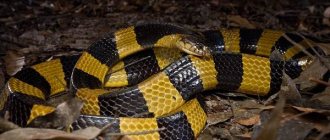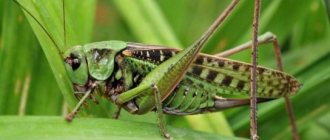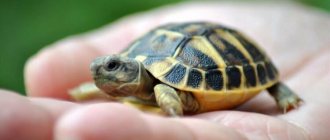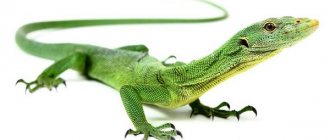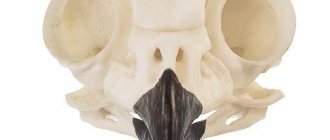- How long do turtles live?
Everyone associates turtles with the eternal slowness characteristic of these reptiles, but not everyone knows that turtles are one of the most ancient representatives of the animal world of our planet. These creatures have been living on Earth for more than 220 million years, yes, they are the same age as extinct dinosaurs. The very name of the word “turtle” comes from the ancient Slavic “shovel”, “tile”, and the Latin name for the turtle is similar – “testa” is translated as “tile”, obviously, the turtles were nicknamed this way due to the similarity of their shells with the tiles themselves.
Description, structure, characteristics
Carapace
Perhaps it is the shell of a turtle that is its most characteristic difference, a kind of turtle calling card. For a turtle, it is, in fact, a sort of mobile home + a means of protection from enemies. The turtle shell consists of a dorsal (carapace) and abdominal (plastron) part. The carapace, in turn, consists of two parts, one of which is the internal armor, formed from bone plates, and the second is the outer part, consisting of horny scutes. In some species of turtles, the bony plates are covered with skin.
The shell of a turtle is very durable, so it can easily withstand a load exceeding the weight of the turtle itself by 200 times.
Size
The size of a turtle and its weight differ greatly from the species, so in the turtle family there are both giant turtles with a weight of more than 900 kg and a shell size of 2.5 meters or more, and small turtles with a weight of up to 125 grams and a shell size no more than 10 cm.
Head and eyes
The turtle's head is streamlined and medium in size. Such dimensions allow turtles, in case of danger, to quickly hide their heads inside an inaccessible shell. Although among them there are also species with large heads that either fit poorly in the shell or do not fit at all.
In land turtles, the eyes are usually directed towards the ground, while in aquatic turtles they are located closer to the top of the head and point forward and upward. The neck of many turtles is usually short.
The vision of turtles is well developed, even moreover, turtles, like people, have color vision and can distinguish colors, a gift that very few animals have. Nature also gave them excellent hearing, allowing them to hear potential enemies from a distance.
Does a turtle have teeth? How many teeth does a turtle have?
Modern turtles, unfortunately, do not have teeth, but ancient turtles had them, those that lived during the era of dinosaurs, but over time they disappeared. Then how does a turtle eat? To bite and grind food, turtles use a strong beak; the surface of this beak is covered with rough protuberances, which practically replace teeth for turtles. The tongue of turtles is short; it serves exclusively for swallowing food, but not for capturing it, and as a result, does not protrude outward.
Limbs and tails
All turtles, without exception, have four legs. But the very structure of these paws depends on the type and habitat of the turtle. The paws of land turtles have a flattened shape, they are adapted for digging soil and are quite powerful. In the process of millions of years of evolution, sea turtles' paws have turned into real flippers for the convenience of swimming in the depths of the sea.
Also, almost all turtles have a tail. The tail of a turtle, like its head, is also capable of hiding in its shell. Moreover, what is interesting is that some turtles have a real pointed spike at the tip of their tail, which serves as another means of protection from enemies.
An interesting fact: some land turtles can molt with age, and their old skin peels off and falls off, both from the paws and sometimes from the shell.
Lifespan
Turtles are truly long-lived even by our human standards, because they live many times longer than us humans. So the average life expectancy of turtles in natural conditions can be 180-250 years.
The oldest turtle in the world, named Jonathan, lives on the island of St. Helena and remembers (probably) the times of Napoleon, because the former emperor of France lived here in exile for some time.
Mata-mata
The Mata Mata (Chelus fimbriatus) has a unique and unusual appearance that makes the animal a master of camouflage. They live in the silty waters of South America.
Due to its unusualness and ease of maintenance, the species is very popular among terrarium enthusiasts.
6
Habitats
Turtles live in all tropical areas, as well as some places with temperate climates. Sea turtles swim in the warm ocean spaces of the Pacific, Atlantic and Indian Oceans. They are not found only near the Arctic and
Antarctica, which is natural, because all turtles love warmth.
Land turtles live in the steppes and semi-deserts of Africa, South and North America, Australia, and Asia. In Europe they can be found in the south, in a number of southern countries: Greece, Italy, Albania.
Red-bellied Shortneck
Photo credit: Petra Karstedt / wikipedia
This graceful, sleek turtle with a small head and interesting webbed feet is native to New Guinea, as well as a small region of Australia.
In the photo: Baby red-bellied short-necked turtle
We recommend watching: Amazing animals endemic to Australia.
8
Nutrition
The diet of turtles directly depends on their species, habitat and lifestyle. Land turtles are practically vegetarians; their main food is tree branches, fruits and grass, mushrooms and vegetables. However, it was not in vain that we wrote practically, since in order to maintain the protein balance in their bodies, turtles can sometimes eat various small animals such as snails, slugs and worms. Land turtles also drink water with pleasure.
But sea and freshwater turtles are already real predators, since their diet includes various small fish,
frogs, snails, crustaceans (some sea turtles happily eat squid, cuttlefish and other shrimp). But the gastronomic preferences of aquatic turtles are not limited to living creatures; along with them, they also eat plant foods: algae.
Interesting fact, there are species of sea turtles that eat poisonous jellyfish. From such food, the meat of the turtles themselves, in turn, becomes poisonous, which scares potential predators away from them. This is a gastronomic remedy.
Indian lobed
Another representative of the tortoiseshell family, which, in case of danger, not only retracts its head, but also closes the front and rear flaps of the shell.
The inhabitant of freshwater bodies of India, Burma and Pakistan feeds on frogs, and can eat small mice, fish and tadpoles.
Because of its tasty meat, locals are happy to include it in their diet, but its catch is strictly limited.
11
Enemies in nature
Speaking of enemies, in natural conditions the main enemies of a turtle are some birds of prey (eagles,
hawks), which grab small turtles, lift them to a great height, from there they throw them onto stones and peck out their entrails from their broken shells.
Interesting fact: the great ancient Greek playwright Aeschylus died an extremely ridiculous death, he was killed by a turtle that fell on his head. The eagle, having lifted the turtle to a height, mistakenly considered the playwright's bald head to be a large stone suitable for breaking the turtle's shell.
Death of Aeschylus by an eagle and a turtle.
As for giant turtles, given their weight and size, they have no enemies in nature. Even people are increasingly treating these majestic, long-lived creatures with due respect.
Trionix Layta
A rather large species of Trionics Lyata with a carapace from 48 to 65 centimeters, lives in the basins of some rivers in India.
The plates have small swirls and bright spots. But the head is most painted, especially in young animals. There are longitudinal dark lines on the green muzzle, yellow spots at the corners of the mouth, and the bottom of the head is a delicate cream color.
This species was discovered back in 1872, during one of the expeditions to exotic India.
16
Hibernation
Yes, turtles, like
Bears and some other animals tend to hibernate, during which all life processes in their body slow down for a while. This usually happens in winter, and hibernation for heat-loving turtles living in temperate latitudes allows them to survive the winter cold without problems.
How to determine gender
The gender difference in turtles is so weakly expressed in appearance that it is sometimes difficult to determine whether this turtle is a “boy” or a “girl.” However, if you approach this issue with due attention, you can identify a number of signs that help determine the sex of a turtle.
1. Shell; in females the shell has a more elongated shape than in males.
2. Plastron, also known as the lower part of the shell. If you turn the turtle over, you can see that in females the lower part of the shell (the one closest to the anus) is flat, while in males it is slightly concave.
3. Tail, males have a tail that is longer and wider at the base, while “lady turtles” have a straight and short tail.
4. Claws, in males they are usually longer on the forelimbs than in females.
Soft-shelled Chinese
One can argue about the beauty of this species, but the fact that it is one of the most unusual is indisputable.
What distinguishes the inhabitant of China and other Asian countries from its relatives is its soft shell. Surprisingly, breathing with its lungs, this turtle can stay under water for a long time.
Scientists have not yet figured out how she manages this, but they recently learned another feature of hers - they urinate through the mouth.
By the way, on our website most-beauty.ru you can see other equally strange and unusual animals on the planet.
7
Types, photos and names
The turtle family is divided into two suborders, divided by the way turtles retract their heads into their shells:
Also, according to their habitat, all turtles are divided into land and sea turtles, which in turn are divided into freshwater turtles, living in rivers and lakes, and marine turtles, living in the seas and oceans.
Below we take a closer look at some of the most interesting turtle species.
Galapagos tortoise
She's the same
elephant turtle. These are real giant tortoises, the weight of a Galapagos tortoise can exceed 400 kg, the length of the shell reaches up to 1.9 m. These tortoises live on the Galapagos Islands, which gave them their name.
Egyptian tortoise
This is already a small representative of land turtles, the length of the Egyptian tortoise shell is no more than 10 cm. They have a yellow-brown color of the shell. This turtle lives in northern Africa and the Middle East.
Central Asian tortoise
This is a small turtle that lives in Asia, has a rounded shell and is colored yellow-brown with dark spots. The average size of the shell of this turtle is 10 cm. It is also one of the most popular types of turtles for home keeping.
Leopard tortoise
She's the same
panther turtle. It is of medium size, the length of the shell is 0.7 m, with a weight of up to 50 kg. The shell of this turtle is high and dome-shaped. The pattern of the shell shows a spotted pattern, similar to the color of a leopard. The leopard tortoise lives in Africa.
Cape spotted turtle
It is notable for being the smallest turtle in the world. The length of its shell is no more than 10 cm, with a weight of up to 165 grams. Lives in South Africa.
Land reptile turtles
The species has a variety of armored forms and low movement speed.
Galapagos elephant
Compared to other representatives of land species, it is a giant. It grows to a body length of almost 2 m, weighing up to 400 kg. The shield covering is light brown in color, with lichens growing over the turtle's long life.
The limbs are designed to withstand the heavy weight of the owner and are covered with protective scales. The carapace is high, dome-like. It is a herbivore.
Panther turtle
The camouflage-colored shell is capable of hiding the owner in places covered with sand. Newly born individuals exhibit a clear pattern. The diet includes plant foods and insects.
Types of freshwater turtles
Painted turtle
This small turtle lives in waters of the USA and Canada. It has an interesting olive-green or black shell color and leathery membranes between the toes.
European marsh turtle
This small turtle lives in the waters of Europe and a number of Asian countries; the length of its shell is 35 cm and its weight is 1.5 kg. It has a brown-brown or olive-colored shell, and also a very long tail, like for a turtle.
Pond slider
So named due to the presence of a bright red spot on the head. The length of the shell of this turtle is 30 cm. Red-eared turtles live in both Americas, in the USA, Mexico, Colombia, Venezuela and several other countries.
snapping turtle
Its characteristic feature is the presence of a cross-shaped plastron and a long tail covered with small spines. It is of medium size, the weight of this turtle reaches up to 30 kg. It lives in the USA and southern Canada; it survives the winter cold in hibernation.
Prickly
One of the rarest species, found only in certain areas of Southeast Asia. You can meet this turtle in the wetlands of tropical rainforests.
What makes it unusual is the unusual shape of its shell. The outer shields protrude far to the side, thus forming protective spikes. Yes, and there are small shoots on the back.
The spiny turtle feeds exclusively on berries and earthworms. In captivity, it can also eat pieces of meat, becoming truly omnivorous.
3
Types of sea turtles
Hawksbill turtle
She's a real carriage. The shell of this turtle is painted in brown tones with a pattern of multi-colored spots. The front flippers of this turtle are equipped with two claws. This turtle lives in almost all oceans, with the exception of cold waters near the poles.
Leatherback turtle
Notable for being the largest turtle in the world. Only the span of its front flipper-like paws reaches 2.5 meters. Its weight is more than 900 kg, and its shell length exceeds 2.6 meters. The surface of this turtle's shell is covered with a dense layer of skin (hence the name). It lives in tropical regions of the Indian, Atlantic and Pacific oceans.
Green turtle
It is also a fairly large turtle, its weight reaches up to 450 kg with a shell length of 1.5 m. It has an olive or green shell color, which, however, may have white stripes and dark spots. Its shell is small in height and oval in shape, and its surface is covered with large horny scutes. The head of this turtle is much larger than that of other relatives, and therefore does not hide inside the shell. It lives in tropical areas of the Atlantic and Pacific oceans.
Elusor macrurus
This endangered species of turtle can only be found in one corner of the Earth. They are found in the Mary River, which flows through the expanses of Australia.
Shells come in a variety of colors and a variety of shades. What makes the head unusual is the growths under the chin, reminiscent of a small beard.
In addition, the inhabitants of river waters, being under water for so long, become overgrown with algae, which create unusual and original hairstyles on the animal’s body.
9
Reproduction
The mating season for turtles occurs at different times depending on the species. However, in all turtles it occurs in a similar way: the males stage real battles for the right to mate with the female. How do turtles fight? It’s very simple, the land ones try to turn the enemy over with a blow from their shell, and the water ones hit and bite each other with their beaks. Only after driving away a potential rival does the male turtle begin courting his “lady,” forcing her to take a position convenient for the actual mating.
Some time after mating, the female turtle lays spherical or ellipsoidal eggs, from which small turtles will be born. Turtles dig special holes for their eggs, and sometimes even use the nests of crocodiles.
From 1 to 200 eggs can be laid at a time (depending on the species). Also, the duration of the incubation period can last from 2 months to six months or more.
After hatching, small turtles begin to struggle for survival; not all of them will survive to adulthood; young turtles are an excellent target for various predators, especially birds of prey.
Keeping at home
Keeping turtles at home has recently become very popular, both land and aquatic turtles are kept. And why not, because caring for them is extremely simple, and turtles themselves are unpretentious creatures. True, all of the above is true for small turtles, since keeping large turtles in the house will not be entirely appropriate.
So, what are the rules for caring for turtles? First, in the turtle's habitat, you need to keep a thermometer to monitor the air temperature and a thermometer to monitor the water temperature (if it is an aquatic turtle in an aquarium).
The water in an aquarium for turtles must either be purified using filters, or if there are none, then changed every day. Maintaining hygiene for aquatic turtles involves removing algae from their shells. But land turtles need to be bathed daily in warm water, washing away dirt and food debris. Also, in winter, it is advisable to irradiate turtles a little with the rays of a quartz lamp, thus creating a kind of sunbathing.
What to feed at home
Turtles need to be provided with a balanced diet. Can you feed land turtles?
leaves of cabbage, dandelion, pulp of apples, cucumbers, tomatoes. To meet the need for protein food, they can be given boiled chicken eggs and vitamin supplements.
Feeding aquatic turtles will be a little more difficult, because they need small animals; you can feed them with dried daphnia, bloodworms, earthworms, boiled chicken or beef. They will not mind eating various insects, cockroaches, and small aquarium fish.
Adult turtles need to be fed once a day, young turtles twice a day and a so-called fasting day once a week.
Interesting Facts
- It was turtles that were the first to fly around our moon, on board an experimental research probe launched by the Soviet Union back in 1968.
- Turtle meat is an expensive and delicious product in some cuisines around the world.
- Turtles are also present in heraldry, in the depiction of the coats of arms of some cities.
- Despite the fact that turtles do not pose a danger to humans, there are exceptions, for example, male leatherback turtles can confuse a swimmer with a female, grab them with their paws and drag them to the bottom.
- The sex of turtles in the egg is determined by the ambient temperature. At lower temperatures, males are born, at higher temperatures, females are born.
Eastern Longneck
In the lakes of Africa and in some eastern regions of the United States you can find a turtle that has the longest neck of the entire turtle family.
From a distance it looks very much like a snake, if not for the shell. And she hunts like a snake, sharply straightening her neck towards the prey. It can also bite a person if it considers that he is dangerous.
These are relatively small beautiful turtles, adults of which do not exceed 10–15 centimeters in length.
10
Video
And finally, here is an interesting documentary about turtles.
Author: Pavel Chaika, editor-in-chief of Poznavaika magazine
When writing the article, I tried to make it as interesting, useful and high-quality as possible. I would be grateful for any feedback and constructive criticism in the form of comments on the article. You can also write your wish/question/suggestion to my email [email protected] or Facebook, with respect, the author.
Author page
Carettochelys insculpta
The pig-nosed turtle, as this species is also called because of the unusual shape of its muzzle, is one of the most remarkable and unusual representatives of the Carettochelydidae family.
It is also distinguished from its freshwater relatives by the shape of its limbs in the form of flippers, like those of the inhabitants of the deep sea. And they are found in the rivers of Australia and New Guinea.
Due to the extinction of the species, the authorities of the states in which the turtle lives have adopted strict laws to protect and increase the population of an amazing representative of the animal world. The editors of most-beauty.ru hope for a speedy restoration of the population of these beautiful turtles.
13
